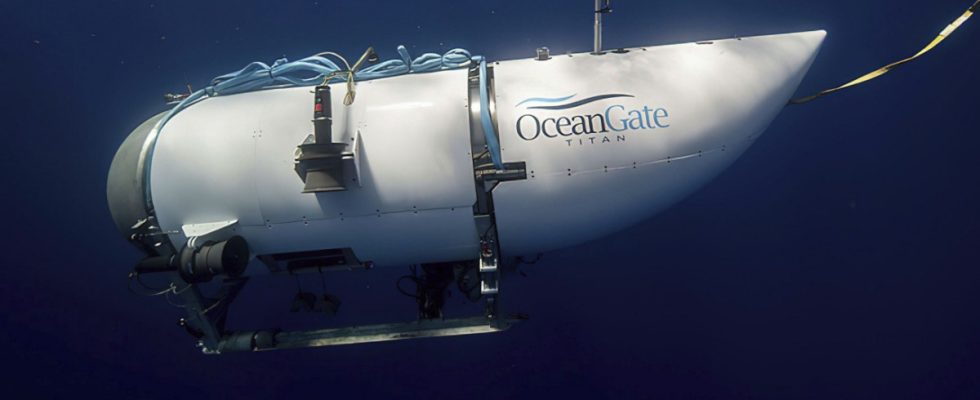In the search for the missing submersible titanium in the North Atlantic off Newfoundland, emergency services may have heard a sign of life from the occupants. Search teams picked up a type of banging noise every 30 minutes Tuesday in the area where the sub is suspected to be, according to an internal US government memo. from which the broadcaster CNN and the magazine Rolling Stone quote. Later, after additional sonars were deployed, the knocking could still be heard, it said. According to the memo, however, it was unclear exactly when and for how long the noise was heard.
In an update that was sent on Tuesday evening, there should be talk of other noises, but according to CNN they were no longer described as “knocking”. The acoustic sounds indicated that there was still hope for survivors, it said. The The US Coast Guard also announcedthat a Canadian search plane had received “underwater noise”. Diving robots have been moved to the area to investigate the origin of the noise – so far without success.
The oxygen will last until about Thursday noon
The 6.70 meter small and 10.4 ton vehicle was on the way to the wreck titanic and has been missing since Sunday morning. According to estimates by the authorities, the oxygen should only last until Thursday noon (CEST) – at five o’clock on Wednesday it was about 30 hours.
There are five people on board: the French explorer Paul-Henri Nargeolet, the British adventurer Hamish Harding and the British-Pakistani business consultant Shahzada Dawood and his 19-year-old son Suleman. Captain is the boss of the operating company Oceangate, Stockton Rush.
A man who led the expedition to titanic two years ago as a tourist, in retrospect calls the dive a “suicide commando”. in one Mirror-Interview describes the Lower Bavarian entrepreneur Arthur Loibl the bad condition of titanium: There had been problems with the batteries, repairs had become necessary, a dive had to be broken off at a depth of 1600 meters.
Also the situation on board the titanium According to Loibl, it should be extremely tense: “It’s a very small space, there are no chairs, there’s nothing in it. There are five of you sitting on the floor, so close together that your legs sometimes cross. You shouldn’t be afraid of contact. Get up or kneeling is not possible.” And because electricity had to be saved back then, Loibl assumes that the passengers are now sitting in the dark.
These descriptions are underpinned by serious security concerns that experts the New York Times according to years ago about the titanium “We are concerned that Oceangate’s current experimental approach could lead to adverse outcomes (ranging from minor to catastrophic),” they wrote in a letter dated 2018, which the newspaper published. Oceangate operates the titanium, the company is accused of misleading marketing in the letter. Her boss Rush had to have the boat tested by an independent body.
Apparently that fits with the impressions that reporter David Pogue from the US broadcaster CBS had made on a trip last year. He told the BBC the vehicle seemed improvised to him. “You control this submarine with an Xbox game controller,” Pogue said. Part of the ballast consists of construction pipes. If the boat gets stuck or leaks, “there’s no backup, no escape pod,” he said.
The search area is huge: according to the coast guard, almost 26 square kilometers were searched by Tuesday evening. Eight other vessels are en route to the scene of the accident, including four Canadian Coast Guard vessels and the French research vessel L’Atalante as well as the Canadian HMCS Glace Baywhich has a decompression chamber and medical staff on board, the US Coast Guard said on Tuesday evening.
After being rescued, divers who have had an accident must get into such a hyperbaric chamber as quickly as possible in order to prevent permanent damage. If people are under high ambient pressure for a long time, as is the case at great water depths, they absorb more nitrogen than normal. This can lead to gas bubbles in the blood and tissues, which can be fatal if they get to the brain.

